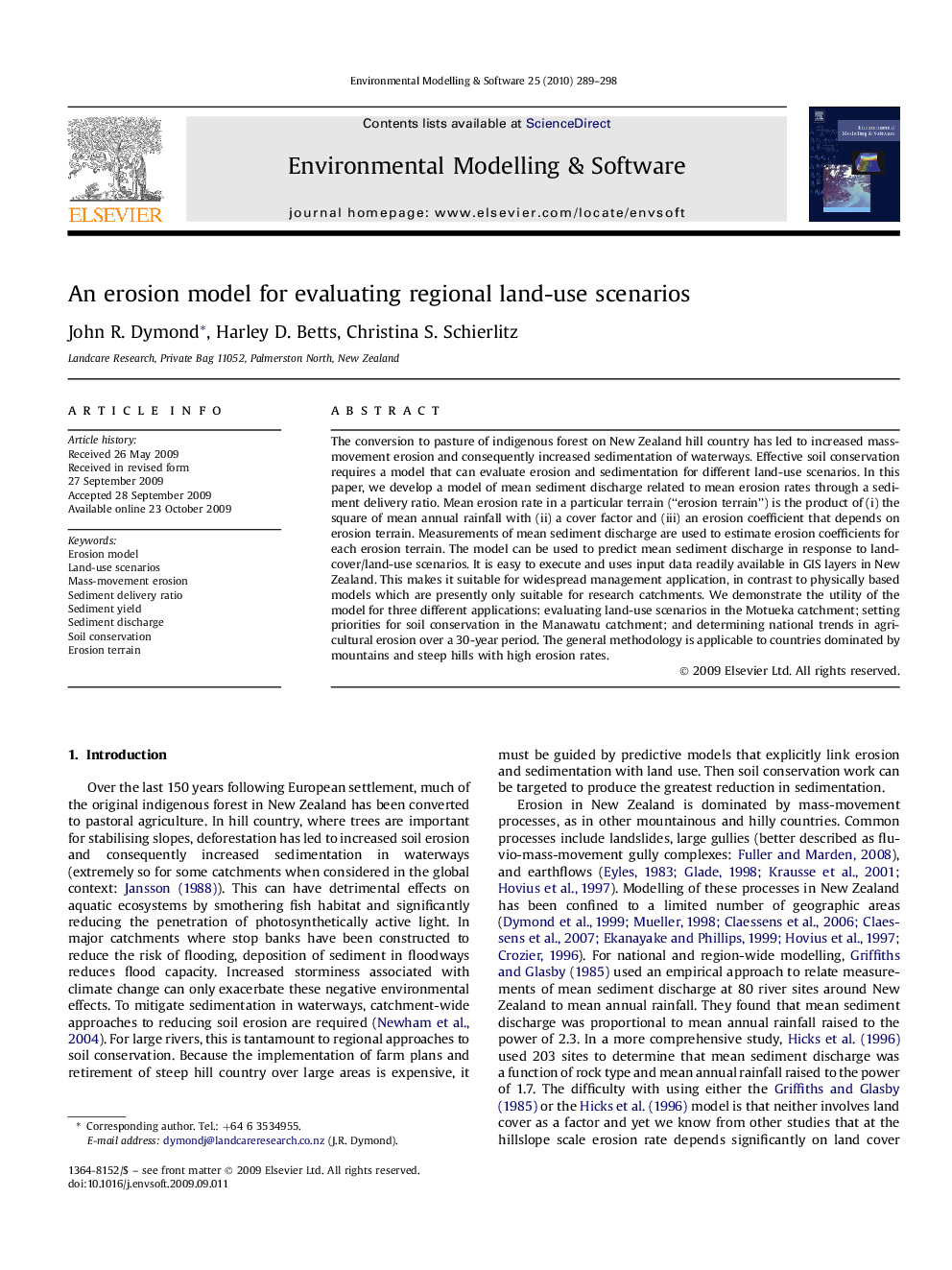| Article ID | Journal | Published Year | Pages | File Type |
|---|---|---|---|---|
| 569940 | Environmental Modelling & Software | 2010 | 10 Pages |
The conversion to pasture of indigenous forest on New Zealand hill country has led to increased mass-movement erosion and consequently increased sedimentation of waterways. Effective soil conservation requires a model that can evaluate erosion and sedimentation for different land-use scenarios. In this paper, we develop a model of mean sediment discharge related to mean erosion rates through a sediment delivery ratio. Mean erosion rate in a particular terrain (“erosion terrain”) is the product of (i) the square of mean annual rainfall with (ii) a cover factor and (iii) an erosion coefficient that depends on erosion terrain. Measurements of mean sediment discharge are used to estimate erosion coefficients for each erosion terrain. The model can be used to predict mean sediment discharge in response to land-cover/land-use scenarios. It is easy to execute and uses input data readily available in GIS layers in New Zealand. This makes it suitable for widespread management application, in contrast to physically based models which are presently only suitable for research catchments. We demonstrate the utility of the model for three different applications: evaluating land-use scenarios in the Motueka catchment; setting priorities for soil conservation in the Manawatu catchment; and determining national trends in agricultural erosion over a 30-year period. The general methodology is applicable to countries dominated by mountains and steep hills with high erosion rates.
